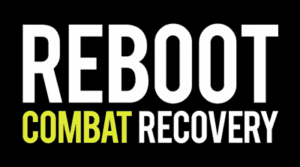Six practical ways that you can give care to children who are living with someone suffering from PTSD.
Those with Post-Traumatic Stress Disorder do not suffer in a vacuum. By some accounts, every PTSD sufferer strongly impacts an average of 10 family members and close friends. This condition is known as “Secondary Traumatic Stress,” and the symptoms mirror those of Primary PTSD. It occurs when one person’s trauma symptoms cause great distress to someone else who loves them (1).
It’s one thing when a healthy adult is confronted by the symptoms of another traumatized adult. But children lack the defense systems and escape options grownups have, and they can be profoundly hurt.
 When children experience physical or psychological trauma at the hands of those they should be able to trust and depend on, disruptions occur in the physical development of their bodies and brains.
When children experience physical or psychological trauma at the hands of those they should be able to trust and depend on, disruptions occur in the physical development of their bodies and brains.
Each of us is born with an effective stress response system within our bodies. From an early age through adulthood, when we’re faced with a threat, this system dumps high doses of adrenaline and cortisol into our bloodstream to prepare us for “fight or flight.”
But if children are unable to defend themselves or escape from a stressful or abusive family dynamic, rather than fight back or run away, their bodies are forced to shut down and employ the “freeze” response while still full of these chemicals.
If this happens frequently, it can result in lifelong damage. The prefrontal cortex, amygdala, and the hippocampus develop poorly under these conditions. These parts of the brain house what are known as “executive functions,” which include a vast range of very important cognitive abilities, including:
- Impulse control
- Emotion regulation
- Self-motivation
- Mental processing speed
- Problem solving
- and others (2)
Deficits in these mental skills can be retained into adulthood and can cause a person to have amplified emotional and physical responses to threat and danger, to experience difficulties in skill acquisition and social interaction, and to be more susceptible to depression, PTSD, health problems, and suicidal thoughts (3).
None of us wants that for our kids.
So let’s look at six practical ways you can help give special care and attention to children living in a household dealing with PTSD.
1. Talk about what’s going on in your home.
There’s an elephant in the room, and ignoring it won’t benefit the child. Without the facts, children are forced to speculate, filling in the missing pieces to make a complete story, which often can be worse than the truth. They may sense your distress and will avoid bringing things up. So it will be up to you to gently broach the subject by asking open-ended questions, listening, answering their questions, and providing comfort and support.
2. Reassure them that it’s not their fault.
Kids often blame themselves for their own abuse. Somehow they conclude, “I caused this.” If this “false guilt” is not countered, it’s an open door for Satan to funnel lies into their growing personalities, wreck their self-identity, make them self-isolate, and pull them into depression. Gently and lovingly correct and clarify as you see this false reasoning develop (4).
3. Provide structure and predictability.
Help them anticipate a consistent pattern for the day: set times for meals, school, homework, chores, playtime, bedtime reading and prayers, etc. They need to know that their parents are “in control” even if it feels like you’re NOT sometimes. Unpredictability makes a traumatized child more anxious and fearful, and therefore, more symptomatic.
4. Give them opportunities to express their emotions.
They may not be able to do so verbally, so tap into their native languages, which are play and imagination. Break out the LEGOs, Hot Wheels, art supplies, tutu, and games. For most young children, play is reality. As you get down on your knees and play with them, the protective walls they have erected will come down, and they will express what’s going on inside, either verbally or by their actions.
5. Give them something to control.
Counter their feelings of powerlessness by helping them master something. The concept of “mastery of performance” defines success as “the result of effort and strategy.” These accomplishments promote adaptability, intrinsic motivation, and the ability to stick with something despite setbacks (5).
6. Involve God intentionally in the process.
God is just as concerned about your child as you are. One of God’s many names in the Bible is “Your Healer” (Exodus 15:26) and He is quite accomplished at exactly that. Tap into His love, experience, and miraculous abilities. Do you need direction, creative suggestions, and insight to help your child? Proverbs 3:5-6 tells us to “trust in the Lord with all your heart, and lean not on your own understanding; in all your ways acknowledge Him, and He shall direct your paths.”
CHRIS ADSIT is the Resource Coordinator for the REBOOT Alliance and the co-founder of Firstline.
RESOURCES
(1) Charles R. Figley, Ph.D. “Compassion Fatigue: Toward a New Understanding of the Costs of Caring” in B.H. Stamm (Ed.) Secondary Traumatic Stress: Self-care Issues for Clinicians, Researchers, and Educators (2nd ed.) (Lutherville, MD: Sidran, 1999), p 10. Figley equates “Secondary Traumatic Stress” with “Compassion Stress” in other articles.
(2) Antoinette Welsh, M.A., Ed.S “Effects of Trauma Induced Stress on Attention, Executive Functioning, Processing Speed, and Resilience in Urban Children.” (2013) Seton Hall University Dissertations and Theses (ETDs) #1907, Winter 12-2013. pp 1-7. ALSO interview input from Marian Steigeler, LPC, MS-MHC, QMHP, President/Clinical Director and Co-founder of The Elrod Center, Eugene, OR.
(3) Antoinette Welsh, Ibid. ALSO: Dr. Vincent Felitti, Dr. Robert Anda, et al, “Relationship of Childhood Abuse and Household Dysfunction to Many of the Leading Causes of Death in Adults,” in the American Journal of Preventive Medicine, 1998, Vol. 14. pp245-258.
(4) Bruce D. Perry, M.D., Ph.D. “Helping Traumatized Children – A Brief Overview for Caregivers;” childtrauma.org/wp-content/uploads/2014/01/Helping_Traumatized_Children_Caregivers_Perry1.pdf
(5) Interview input from Marian Steigeler, see endnote #2.






